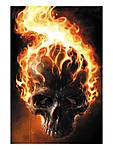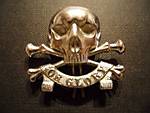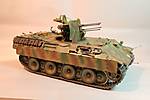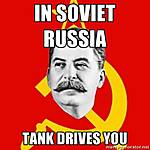

Ooops just noticed the driver's back rest is crooked.




@ John: nice one, Ilike the last two pics before the chipping, they almost like the real thing

Paul




 The Puma did look more intimidating but as it turns out they are about the same as in part and time....7/2 just isnt repetitive like the Puma suspension was.
The Puma did look more intimidating but as it turns out they are about the same as in part and time....7/2 just isnt repetitive like the Puma suspension was.



Paul, thanks for the kind words !!!
Your Flak is coming along great ! I like that base colour, it smells like sand






































 That is a great selection too.
That is a great selection too. 











































@Gary
@Robert
I know it´s very hard to tell proper colors with old black and white photos, this is a picture from PZ.I manual. It is retouched as usual with this kind of pictures but it only casts more doubts about colors.

Crew Compartments For the first part of the war, and probably before the war, the official paint scheme for tank crew compartments mandated that this red colour be completely overpainted. There were two colours used; an ivory colour for the upper part of the compartment, and a grey-green colour for the lower part.
This grey-green is still something of a mystery. Despite extensive research, Mr. Doyle has not yet found its number. I compared a sample of it to an *incomplete* RAL colour chart, and found the closest match to be RAL 7033. In this lower area, the grey-green covered just about everything. Transmission boxes and other modules, which were perhaps manufactured separately, got this same colour. Torsion bars, levers, storage boxes, etc. were painted uniformly grey-green. In late 1942, the manufacturers were ordered to stop using the grey-green paint, and leave the bottom of the tank in its original red primer (see above). This was definitely a step backwards in terms of ergonomics – the red paint was quite dark. But when you look in the late-war vehicles, red primer is what you find down below. Sometimes you will find a red lower area with a grey-green transmission box or turret motor, probably because items could be stockpiled for some time before use.
The colour for the upper part of the interior is no mystery. It was RAL 1001, then called Elfenbein, i.e. Ivory. (Note: if you buy a modern RAL colour book, you will find that the name Elfenbein has been moved to another colour! Trust the numbers, not the names.) This I would describe as a pale beige, or deep cream colour. During 1941 and 1942, some manufacturers were sent letters ordering them to "stop using Beige for the interior and return to the original colour". What Beige means is not recorded; probably they were using one of the new North African colours to save money. This indicates that while we may discover the official rules for painting, we can’t say that they apply to 100% of actual vehicles. Within this ivory area of the tank, all items of what I would call "working machinery" were painted black. This includes MG mounts, movable handles, vision ports, gearboxes and handwheels, etc. Also, it seems that every equipment stowage point was labelled, by hand at first, and later with a decal.













 I just saw the weather forecast for this week. Snow in New York and Michigan, I however don't live in either of those states.
I just saw the weather forecast for this week. Snow in New York and Michigan, I however don't live in either of those states. 

 |